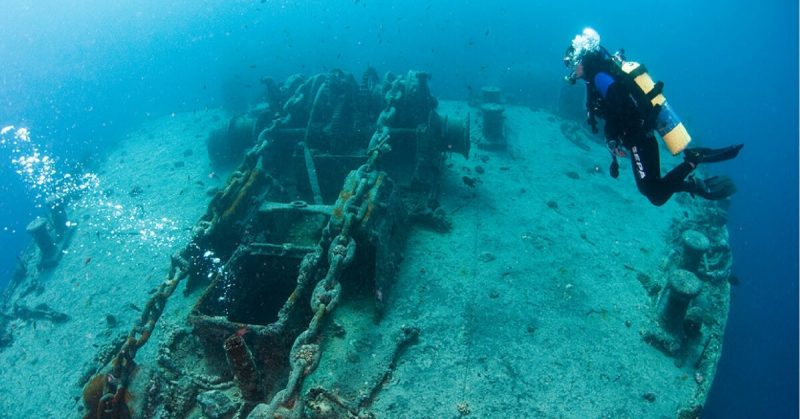The University of Nottingham has started the Thistlegorm Project in hopes of documenting and preserving this important artifact of history. Dr. Jon Henderson is the director of the project, and he has stated that the wreck should be available to view by the general public.
To that end, the project has used 3D imaging to take remarkably detailed photos and videos of the doomed ship. 24,307 high-resolution photos were captured over the course of twelve dives to the site. It is one of the largest photogrammetric surveys ever undertaken for a shipwreck.
The project was also among the first to use 360-degree video. This allows people to experience what it looks like when diving the site.
These recordings and photos are part of the project’s desire to document the site. There is no legal protection for the site, so this documentation will allow the project to see what changes over time and take steps to preserve it for the benefit of future generations.
The SS Thistlegorm was launched in April of 1940. She was built by Joseph Thompson & Sons shipyard in the Sunderland district in the northeast of England. She had a triple-expansion steam engine that was rated to 1,850 hp (1,380 kW). She had a 4.7 inch (120 mm) anti-aircraft gun and a heavy caliber machine gun mounted after construction. The Albyn Line owned and operated the Thistlegorm and three other vessels at the beginning of World War II.
During the war, the Thistlegorm made three successful voyages for the British. On the first trip, she sailed to America to pick up steel rails and parts for aircraft. On the second, she traveled to Argentina to get grain. On the third, she got rum from the West Indies.
Her fourth voyage was to Alexandria, Egypt, on June 2, 1941. She carried two steam locomotives and the coal and water tenders that went with them, trucks, armored vehicles, motorcycles, guns and ammunition, radio equipment, boots, and parts for airplanes. The trains were to be delivered to the Egyptian National Railways while the rest of the cargo was intended for the Western Desert Force.
The Germans believed that the Allies were bringing troops into the area and so they sent two Henkel HE 111 airplanes from the II Staffeln, Kampfgeschwader 26 to locate the troop carrier and destroy it.
Not finding the troopship but instead finding the Thistlegorm, the planes hit the ship with two bombs near the stern. The ship caught fire which spread and eventually set the ammunition in the hold on fire. The resulting explosion tore the ship in two. Eyewitnesses reported that it took less than a minute for the ship to sink after the explosion. Going down with the ship were four sailors and five members of the Royal Navy who were there to man the guns.
The survivors were recovered by the HMS Carlisle. The majority of the cargo went down with the ship. The main exceptions were the locomotives that had been blown clear of the ship by the explosion.
The wreck sat undisturbed until it was discovered by Jacques Cousteau after he received information from local fishermen. He documented the wreck in his book, The Living Sea.
In the early 1990s, the area became known as a diving resort location. The depth of the water plus its clarity made it an easy place for beginning divers to explore. The Thistlegorm became a star attraction in the region. Another part of the appeal of the Thistlegorm is that the explosion that sank her ripped out much of the superstructure. It is therefore relatively easy to swim in and explore her cargo.
That cargo is another part of what has made the Thistlegorm one of the most famous dive sites in the world. The hold of the ship contains a sort of museum to the equipment used during the war. Unfortunately, the only people who can visit this site are divers.
